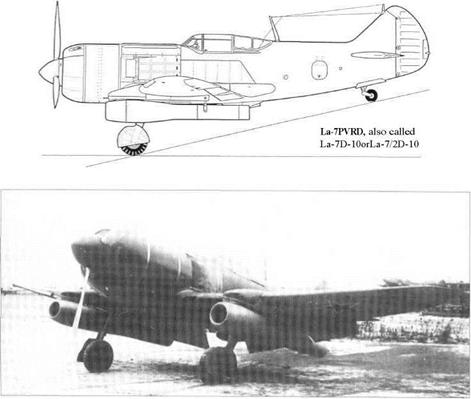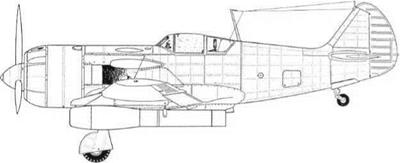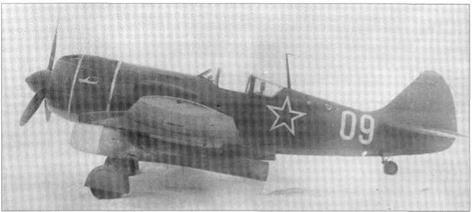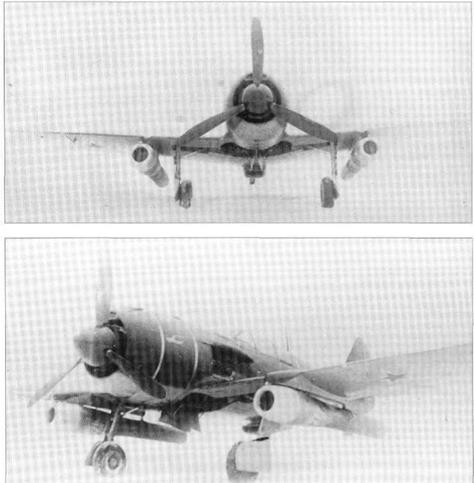Lavochkin La-7PVRD and La-9RD

Purpose: To investigate the use of pulsejets to boost fighter performance.
Design Bureau: The OKB of Semyon A Lavochkin.
In 1942 Vladimir N Chelomey, working at TsIAM (Central Institute of Aviation Motors) began bench-testing the first pulsejet in the Soviet Union. This was independent of work by the German Argus company, which because of Soviet secrecy became famed as the pioneer of such engines. The Soviet unit received two designations, D-10 and RD-13. In 1946 the first two flight-cleared D-10 engines were hung under the wings of a slightly modified La-7, which was designated La-7PVRD. In the second half of 1947 a second pair, designated RD-13, were flown under the wings of an La-9, which misleadingly received the designation La-9RD. Despite the fact that the programme had already been abandoned, eight further La-9 fighters were fitted with these engines, and all nine made a deafening formation flypast at the Tushino Aviation Day.
Left: La-7/2D-10.
The D-10 pulsejet appears to have been heavier than the German 109-014 unit of similar size, though weight data are lacking. The duct was mainly aluminium at the front and steel to the rear ofthe fuel injectors. Fuel was drawn from the main aircraft tanks and ignition was electrical. The unit was suspended from a shallow pylon projecting ahead of the wing leading edge with two main attachments, with a steadying attachment at the rear. Apart from the pulsejet instrumentation and control system a few modifications were needed to the aircraft, the main one being to remove a large portion of flap above the pulsejet jetpipe. No data are available describing how thrust varied with airspeed or height; Shavrov merely gives the thrust of a single D-10 as 200kg (44 lib).


 Though these pulsejets performed as expected, they significantly added to aircraft weight and drag, and reduced manoeuvrability, especially rate of roll. In addition, the violent vibration transmitted to the aircraft ‘made flying difficult’ and was very unpopular with pilots.
Though these pulsejets performed as expected, they significantly added to aircraft weight and drag, and reduced manoeuvrability, especially rate of roll. In addition, the violent vibration transmitted to the aircraft ‘made flying difficult’ and was very unpopular with pilots.
|
|||||||||||||||||||||||||||||||
|
|||||||||||||||||||||||||||||||
|











